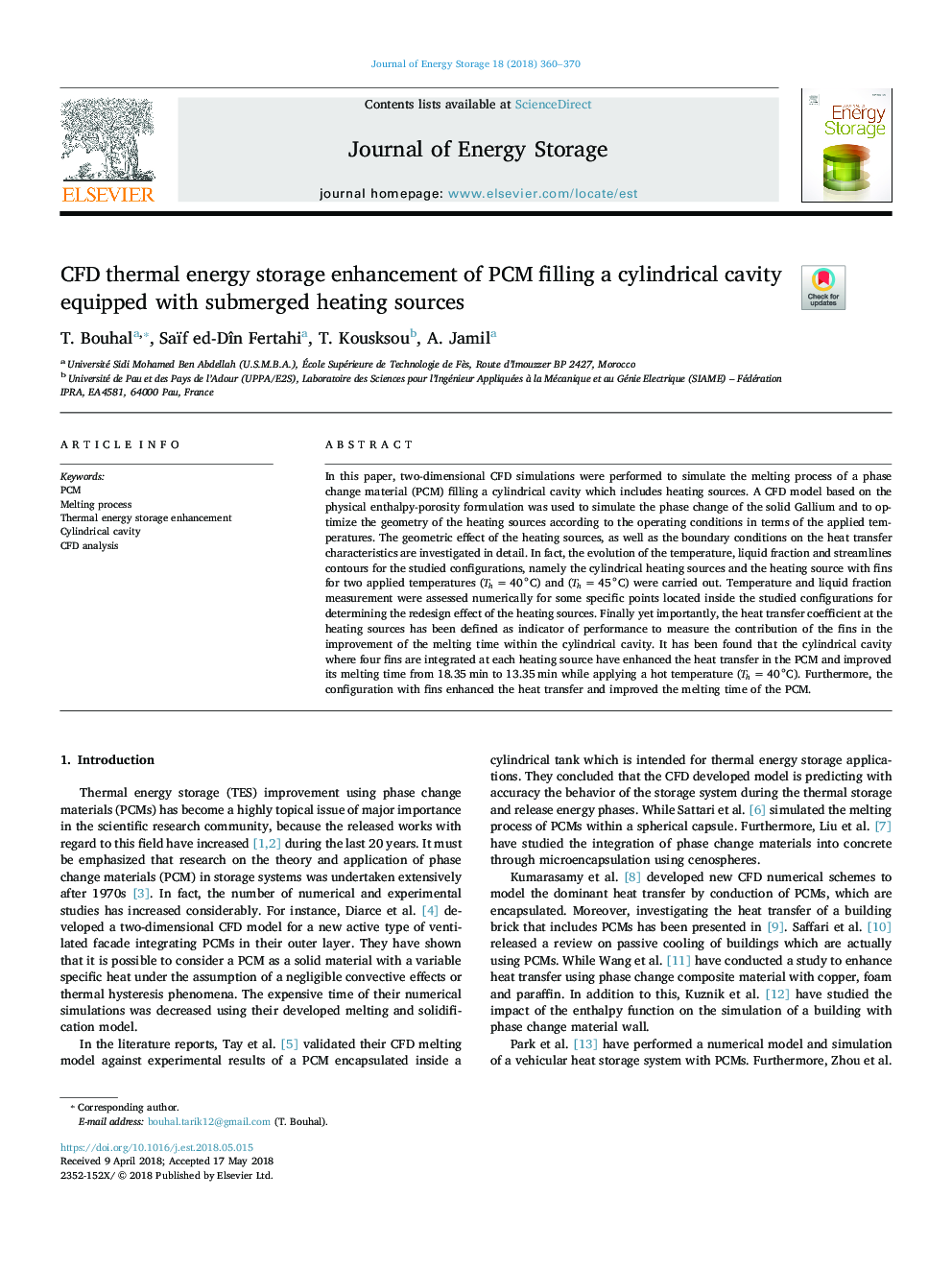| Article ID | Journal | Published Year | Pages | File Type |
|---|---|---|---|---|
| 7539843 | Journal of Energy Storage | 2018 | 11 Pages |
Abstract
In this paper, two-dimensional CFD simulations were performed to simulate the melting process of a phase change material (PCM) filling a cylindrical cavity which includes heating sources. A CFD model based on the physical enthalpy-porosity formulation was used to simulate the phase change of the solid Gallium and to optimize the geometry of the heating sources according to the operating conditions in terms of the applied temperatures. The geometric effect of the heating sources, as well as the boundary conditions on the heat transfer characteristics are investigated in detail. In fact, the evolution of the temperature, liquid fraction and streamlines contours for the studied configurations, namely the cylindrical heating sources and the heating source with fins for two applied temperatures (Thâ¯=â¯40â¯Â°C) and (Thâ¯=â¯45â¯Â°C) were carried out. Temperature and liquid fraction measurement were assessed numerically for some specific points located inside the studied configurations for determining the redesign effect of the heating sources. Finally yet importantly, the heat transfer coefficient at the heating sources has been defined as indicator of performance to measure the contribution of the fins in the improvement of the melting time within the cylindrical cavity. It has been found that the cylindrical cavity where four fins are integrated at each heating source have enhanced the heat transfer in the PCM and improved its melting time from 18.35â¯min to 13.35â¯min while applying a hot temperature (Thâ¯=â¯40â¯Â°C). Furthermore, the configuration with fins enhanced the heat transfer and improved the melting time of the PCM.
Related Topics
Physical Sciences and Engineering
Energy
Energy (General)
Authors
T. Bouhal, Saïf ed-Dîn Fertahi, T. Kousksou, A. Jamil,
